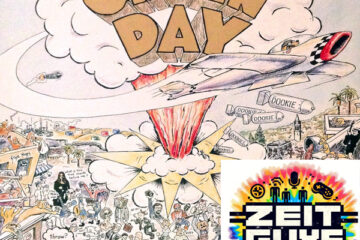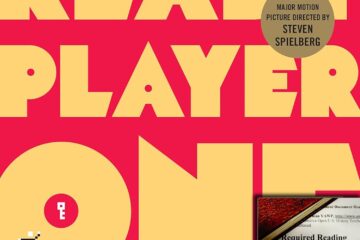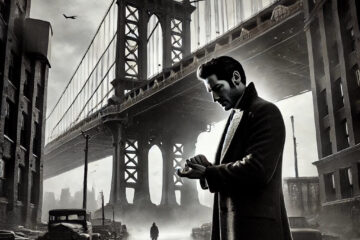Indian Massacre of 1622 by Lillie Fleming
March 22, 1622 was an important date to our history and the relationship between the British and Indians in colonial America. On this day, Indians belonging to the Powhatan tribe made a sudden, brutal attack on settlements belonging to the colony of Virginia. As a result of this attack, nearly three hundred and fifty colonists lost their lives or were stripped from their entire family. This piece of art depicts a community that has been completely and utterly destroyed and colonists being savagely wounded and killed. The observers of this artwork can assume that this attack had been precisely planned and organized in a way that allowed them to carry out their mission without error. The audience is able to sense that the tribe’s plan worked because there is a distinct dominance outlined where the Indians have complete control over the community. This dominance and strength resulted in a victory for the Powhatan Confederacy and a treacherous loss for the British settlers.
The Indians arrived on ships a day prior to the attack bearing gifts of meat and a variety of fruits. This method used by the Powhatan disguised their true intentions of traveling to Jamestown, as they always intended to attack the colonists in the village. The next day, the Powhatan natives socialized with the Britains before they quickly seized their labor tools, using them to wound and kill the settlers. Men, women, children, and newborns all lost their lives, nobody was spared except those who were captured and tortured. The tribe’s harsh treatment of the settlers’ bodies symbolized how cruel and demonic they acted towards people they loathed. The artist embodies enormous amounts of emotion into their work along with ornate detailing of the strike to fully capture this moment in history.
The Powhatan Massacre by Mason Ashby
In the paintings drawn by Matthaeus Merian it depicts many Powhatan Indians attacking a settlement of English colonists. In the picture it shows most of the Indians using the same weapon, which is a small knife. This painting shows how the colonists viewed the natives as savage, unmoral, and ruthless but the Indians were not as savage as they thought.
All of the terrible things that happened in this picture could have been totally wrong or totally wrong depending on how the English told the story or how Matthaeus thought it happened. In the picture it shows women and children being killed, which is seen to be immoral and savage. This is just another example about how the English viewed the natives. Since not all of the Indians have taken their first strike then it means that the attack has just begun, so since people are fleeing from a table where they are still half way sitting the English let them into the fort and trust them. Also, a man is being dragged by one of the Indians, so he is either dead or about to die. That shows how the English viewed the Indians as savage because the guy is already dead and they are still attacking him.
In the image all the Indians are all striking at the same time, which means that it is a strong throughout plan and they are all following in the plan. The size of the knives are so small that they could hide it in the waistband of their waist garments. In the back of the image you can see that there are native american canoes that are traveling towards the shore and on the shore there looks to be a fort. Also you can see that the English are firing cannonballs at the natives , which are close to shore. If the English thought they were so much of a threat then they probably would have fired earlier, so the natives could have used their friendship to come closer then drawn their bows when they were close enough. These tactics show how natives were not savage and that they used strategy to fight.
Attack by Liv Gonzalez
The illustration crafted by the natives supports the view of brutality on both side of the immigration and could help provide a wider perspective on the native and european conflicts. The picture of the Native Americans invading the English colony painted most likely by the english tells us many things and provides helpful insight into the pilgrim mind.
The paint features native americans illustrated like savages. The natives have sunken in and blackened eyes. They are wearing little to no clothing. And, the way they are murdering is clearly illustrated to come off as savage like. The natives are pictured with only clubs and knives to give a sadistic feel because in order to kill someone with those weapons the murderer would have to witness the crime first hand for longer than killing someone with an arrow or a gun. The
only time natives in this painting are pictured with arrows is when they are in canoes. The bow is needed to kill from the water to shore. Another way natives are pictured as cruel and merciless is the killing of mothers and children. The crueler the Natives are pictured the more justified the Europeans felt in their own crimes.
However, the natives were also not completely innocent. Another reason bows were used was to ward off escape. The natives intended to completely extinguish all life from this colony. The colony was originally taken from them so, the Indians retrieve to take their own land again. Furthermore, the desire to execute all european life from the colony can be seen because the colony is being burned. The burning off a house in the english colony pictured here is especially damaging because, the whole town would be crafted from wood. In order to make sure their attack was successful, it needed to be a surprise. I infer that the attack was a surprise attack because the english are pictured eating and their weapons are not drawn.
1622 Woodcut of the Massacre of Jamestown Settlers by Lulu Congrave
Matthaeus Merian created a woodcut in 1682 that depicted the Second Anglo-Powhatan War on March 22, 1622. Chief Opechancanough led the war against the English settlers in Jamestown. After a period of peace between the English settlers and Powhatans, tensions started to rise once the peace-makers between the two groups died and the settlers started to steal food from the natives. The natives knew they did not have a chance against the Jamestown settlers since they and their mother country were so far technologically advanced. The scared Powhatans planned an attack against the settlers with hopes of one final chance to abolish their most advanced enemies who happened to be their neighbors as well. The ambush surprised the settlers when the natives concocted a secret attack that ended in the murder of 347 English settlers. The woodcut portrays the natives ruthlessly killing the settlers by stabbing them. Jamestown settlers appeared terrified and helpless in the woodcut.
The woodcut represents one of the cultural clashes in the Chesapeake. The three Anglo-Powhatan wars between 1610-1644, all started with distrust between the English settlers and Powhatans. The first Anglo-Powhatan war lasted between 1610-1614 and ended with the marriage between John Rolfe, an English settler, and Pocahontas. When John Rolfe and Pocahontas died, a few Powhatans went to England for Pocahontas’ funeral. After they saw how advanced England was, they were scared without the peacemakers the English settlers would try to take over. Whether the Powhatans wanted to abolish the Jamestown settlers or just make them aware that they were not defenseless, the natives thought their only option was to attack them.
The Powhatans brutally attacked the settlers, whether they were men, women, children, or elderly. This ambush caused retaliation from the English settlers and continuous battles between the natives and the settlers. The woodcut shows the history of the Powhatans and Jamestown settlers, and offers more information and understanding of how they. lived and behaved with one another.


